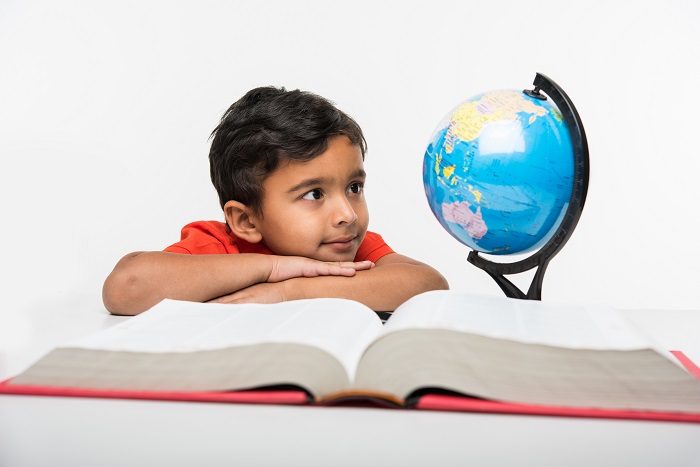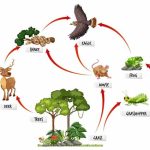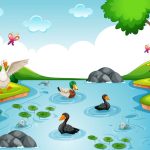In the magical world of early childhood education, where every discovery is a wonderful journey, we dive into the fascinating landscape of. Here, the introduction of fundamental terms such as “top,” “bottom,” “above,” and “below” serves as a gateway to a world of cognitive achievements and sparks a sense of wonder in the young learners traversing this educational terrain. This extended guide is crafted to be your companion on a deeper exploration of the foundational “top, bottom, and middle” concepts. It goes beyond the basics, offering an abundance of engaging activities and invaluable insights chosen for both educators and parents to enable them to teach above and below. Together, let’s kick start on a delightful adventure, creating an immersive and enjoyable learning experience that captures the imagination of the questioning minds of preschoolers.
Embarking on the Vertical Journey: Teaching Top and Bottom
Teaching the concepts of “top” and “bottom” is a foundational step in developing a child’s spatial awareness. Utilizing interactive top and bottom activities for preschoolers not only aids in comprehension but also makes the learning process enjoyable.
- Stacking Game: Building Understanding Brick by Brick
- Drawing Connections: Visualizing Heights
Engage preschoolers in the “Stacking Game,” where they arrange blocks or toys from the bottom to the top. This hands-on activity not only enhances tactile understanding but also provides a visual representation of the spatial relationship between the top and bottom.
Activities involving drawing lines from the bottom to the top or vice versa encourage children to visualize and articulate their understanding of these space-related ideas. This creative approach reinforces the abstract notion of top and bottom in an observable way.
Navigating Heights: Grasping “Above” and “Below”
The concepts above and below introduce preschoolers to the vertical dimension, enriching their understanding of relationships. Here, interactive games and relatable scenarios play a central role.
- Cloud and Rain Game: A Playful Descent and Ascent
- Everyday Scenarios: Real-Life Contexts
The “Cloud and Rain” game involves moving a raindrop above and below a cloud cutout, turning learning into an enjoyable activity. The visual representation helps children associate the terms with real-world positions, enhancing their geographic literacy.
Incorporate simple stories or scenarios into the learning process where preschoolers can identify objects positioned above or below one another. This approach grounds the concepts in everyday experiences, making them more relatable and easier to grasp.
What Has a Bottom at the Top? Exploring the Middle Concept
Introducing the concept of the “middle” takes the exploration of relationships a step further to know what has a bottom at the top. Engaging activities and relatable examples make this abstract concept more observable for preschoolers.
- Sandwich Making: A Tasty Exploration of the Middle
- Identifying the Middle: Finding Balance
The “Sandwich Making” game involves placing ingredients in the middle of two slices of bread, turning a simple activity into a lesson about positioning. This hands-on approach transforms the abstract concept into a practical understanding.
Encourage preschoolers to identify what has a bottom at the top that is a “middle item in a row” or “sequence of objects”. This activity fosters observational skills and helps children visualize the concept of “middle” in various contexts.
Making Learning Fun: Tips for Parents and Educators
Ensuring that learning is enjoyable is key to cementing concepts in the minds of preschoolers. Here are some practical tips for parents and educators on how to teach above and below:
- Use Visual Aids: Enhancing Understanding Through Imagery
- Interactive Play: Transforming Learning into Playtime
- Repetition is Key: Reinforcing Spatial Concepts
Incorporate visual aids such as pictures, diagrams, or drawings to supplement verbal explanations. These visual cues provide additional support for children to grasp relationships more effectively.
Integrate games and activities that involve movement and engagement. By turning learning into play, educators and parents can make the process more enjoyable and memorable for preschoolers.
Repetition is a powerful tool in early childhood education. By revisiting activities and concepts regularly, children have the opportunity to internalize spatial relationships gradually.
The Importance of Geographic Literacy: Beyond the Classroom
Understanding geographic concepts extends beyond academic achievement; it plays a crucial role in a child’s overall development. Spatial literacy lays the groundwork for skills such as problem-solving, geographic reasoning, and coordination, all of which are vital for a child’s holistic growth.
Expanding the Learning Horizon: Beyond Top, Bottom, and Middle
As children grasp the “top, bottom, and middle” concepts, educators and parents can encourage them to explore the broader world of relationships. Activities involving more complex terms like “next to,” “between,” and “in front of” expand their vocabulary, providing a solid foundation for future academic success.
Teaching preschoolers about the concepts of “top,” “bottom,” “above,” and “below” is a dynamic journey. The extended exploration provided in this guide offers a more comprehensive understanding of spatial relationships for both educators and parents. As preschoolers grasp the “top, bottom, and middle” concepts, they not only develop essential thinking skills but also lay the groundwork for more complex geographical understandings in the future. This comprehensive approach to teaching geographic concepts ensures that the learning experience is not only educational but also enjoyable, fostering a positive attitude toward exploration and discovery.
Let’s continue to make learning about heights and positions a joyful adventure for these questioning minds, building a solid foundation for a lifetime of academic success! Embark on an educational journey like no other with EuroKids, where we are dedicated to transforming early learning into an appealing and enriching experience. This commitment perfectly aligns with the principles highlighted in this comprehensive guide, which explores the complexities of teaching “top, bottom, and middle” concepts to preschoolers.
At EuroKids, we pride ourselves on being pioneers in providing top-notch early childhood education. We recognize the profound impact that quality education has on a child’s developmental journey. Our philosophy revolves around fostering curiosity and instilling a lifelong love for learning from the very beginning. As you navigate through the engaging activities and valuable insights offered here, be rest assured that EuroKids shares the same passion for creating immersive and enjoyable learning experiences. Every concept, including relationships, is approached with creativity and enthusiasm to make learning a delightful adventure for young minds.
Join us on this educational journey as we celebrate the inquisitiveness of every child. At EuroKids, we go beyond just nurturing curiosity; we champion it. Together, let’s develop a foundation that not only imparts knowledge but also sparks a genuine joy for exploration and discovery. Because at EuroKids, every child’s curiosity is not just nurtured; it’s celebrated.
















